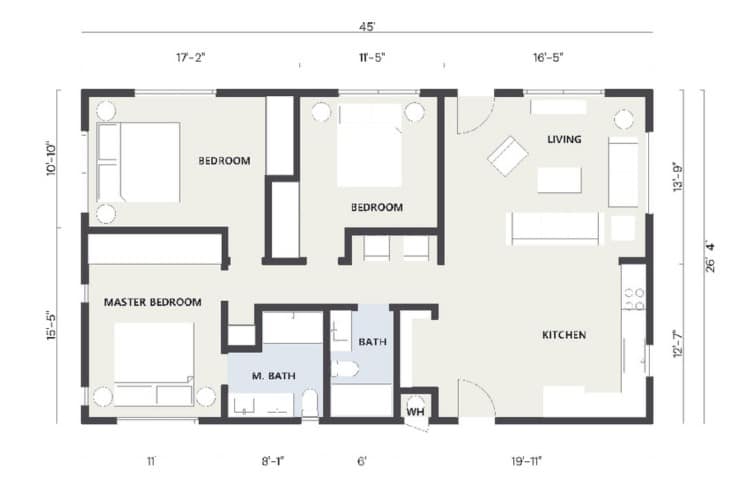Key Differences Between Pool Houses and ADUs
11 min read
TLDR: Pool houses and ADUs serve distinctly different purposes. A pool house is an accessory structure designed to complement a swimming pool by offering features such as changing areas and storage. In contrast, an ADU is a fully functional, independent living space that can serve as a separate residence—it is subject to stricter regulations but offers greater potential for rental income and property value increase. To make informed decisions about property improvements, ensure compliance with local laws, and maximize the long-term value and utility of your property, you’ll want to understand these differences. We’ll break it down below!

What is the Difference Between a Pool House and an ADU?
A pool house is designed to enhance the experience of having a swimming pool on a property. It often incorporates design elements that blend with the outdoor environment while providing a convenient space for relaxation, storage, and changing after swimming. These typical features include:
- Lounge Areas: Comfortable seating for relaxation and socializing by the pool.
- Storage Space: Room for pool equipment, floaties, towels, and outdoor furniture.
- Changing Rooms: Facilities for changing into and out of swimwear, often including bathrooms or outdoor showers.
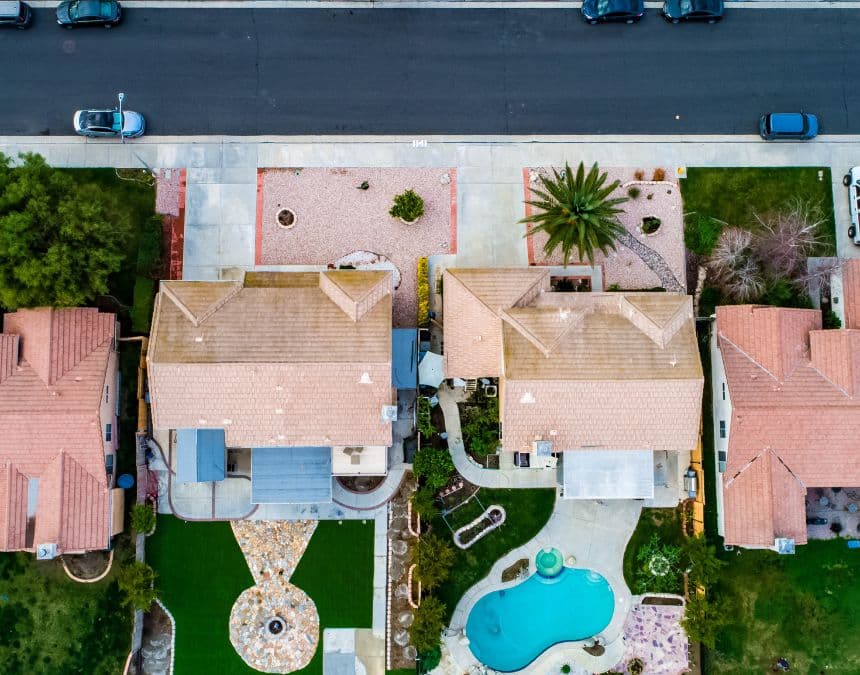
Integrating a pool house into your backyard can enhance usability with shaded seating, storage, and entertainment areas while complementing the pool’s aesthetic.
While a pool house can sometimes include amenities like a bathroom or kitchenette, it’s generally not intended to function as a full living space (though in some cases, it may). An accessory dwelling unit (ADU), on the other hand, is always a self-contained living space secondary to a primary residence on the same property. ADUs can serve various functions, including:
- Guest Accommodation: Providing a place for visitors or family members that typically includes a kitchen, bathroom, and living space.
- Rental Income: Generating income by renting out the unit.
- Home Office or Studio: Serving as a separate workspace or creative area.
ADUs are subject to specific regulations that facilitate their construction and use. In California, laws have been put in place to simplify the permitting process and encourage ADU development as a way to address housing shortages and offer homeowners more flexible living arrangements. These regulations aim to make it easier for people to add ADUs to their properties while contributing to the state’s housing goals.
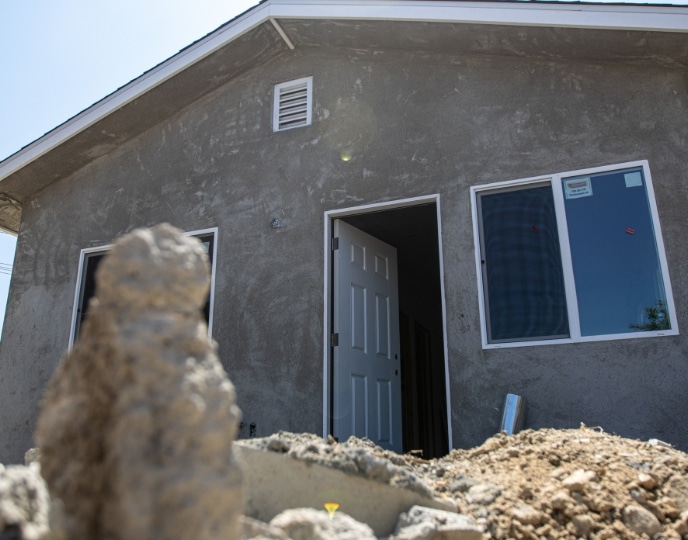
Properly designed ADUs and pool houses maximize space and functionality, balancing recreation with added living or rental potential.
Pool House vs ADU
To understand these key differences between a pool house and an ADU, take a look at the table below.
| Feature/Comparison | Pool House | ADU (Accessory Dwelling Unit) |
|---|---|---|
| Usage | Serves as a functional complement to a pool area. | Provides full, independent living quarters. |
| Privacy Considerations | Typically open to the pool area, less emphasis on privacy from the main house. Does not necessarily have a separate private entrance. | Designed with privacy in mind, often including separate entrances and visual barriers from the primary residence. |
| Property Value Impact | Adds value as an amenity for the existing pool area. | Often significantly increases property value by adding a separate living unit. |
| Cost Comparison | Typically lower, includes basic plumbing and design; permits may vary. | Generally higher, includes construction, permits, plumbing, and electricity. |
| Best Scenario | Ideal for enhancing outdoor living and poolside activities. | Ideal for property owners seeking additional living space or rental income. |
| Square Footage | Typically smaller, focused on storage and poolside amenities. | Larger, designed for full living (kitchen, bath, bedroom, etc.). |
| Outdoor Living Integration | Enhances outdoor comfort and complements pool environment. | Can integrate with outdoor living but provides separate, self-contained space. |
| Permits & Regulations | Fewer permits, generally easier to build. | Stricter regulations, may require more detailed design and permits. |
Construction and Space Requirements for Pool Houses and ADUs
ADUs tend to face stricter regulations and require more space than pool houses (though this can vary by local laws!) While ADUs typically need 150-400 square feet for a studio or one-bedroom, pool houses can be as small as 100 square feet. Lot coverage restrictions, setbacks from property lines, and maximum square footage limits are common considerations for both. Homeowners’ associations often have additional rules regarding exterior aesthetics and placement as well.
In Greater San Diego, ADU regulations have become more flexible to address housing shortages. As of 2024, most single-family and multi-family lots can include an ADU, regardless of lot size, with a maximum size of 1,200 square feet or 50% of the primary dwelling.
Pool houses, classified as accessory structures in San Diego, are generally limited to 1,000 square feet and must be set back at least 5 feet from property lines. Specific rules may vary by municipality, so it’s important to check with local planning departments for current regulations.
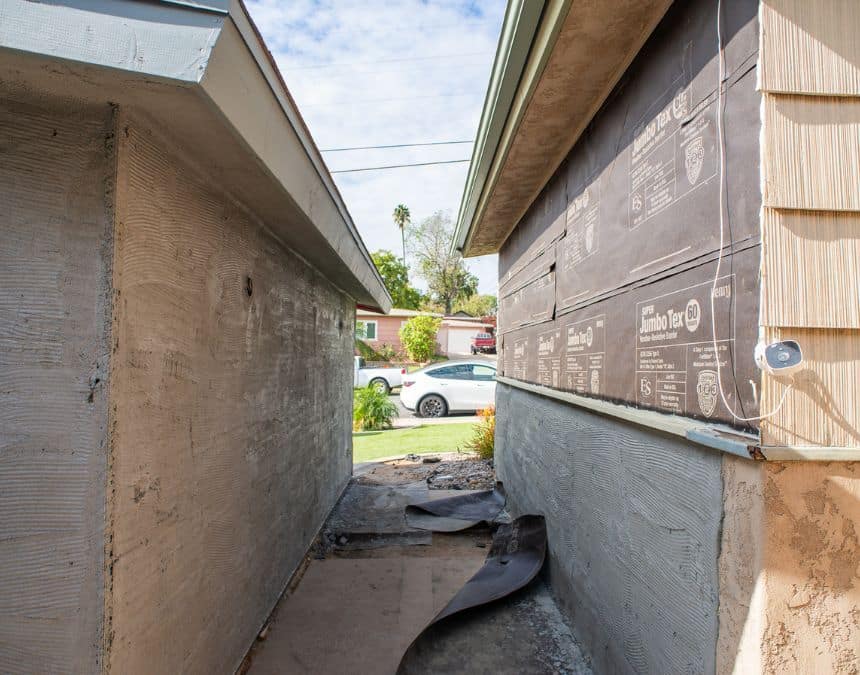
Unlike pool houses, ADUs require significant structural upgrades like plumbing, insulation, and electrical systems to meet residential building codes./em>
Zoning and Setback Requirements
Zoning laws and setbacks, which vary by location, aim to maintain neighborhood aesthetics and manage urban development. In San Diego County, ADUs are usually permitted on residential lots, with size limits that can be up to 1,200 square feet or 50% of the primary dwelling—whichever is less. They typically require a setback minimum of four feet from property lines.
Pool houses, often classified as an accessory structure rather than an accessory dwelling, are usually limited to 1,000 square feet and have a minimum setback of five feet from the property line. However, regulations can differ notably between cities within the county. For instance, Encinitas may have specific coastal zone rules, while La Jolla follows San Diego regulations with a community plan overlay district.
Homeowners should consult their local city’s building department, review any homeowner’s association rules, and consider reaching out to local professionals (like our team at Better Place!) who are familiar with area-specific codes. This will help you avoid potential issues in the planning and construction process.
Permitting Process
The permitting process can be tedious, so we recommend working with a local company that knows the area’s specific requirements. It involves submitting detailed construction documents to the local authorities, going through a review process, and making any required changes based on their feedback.
Building near a pool may require submitting extra drawings, such as a detailed site plan showing the proximity to the pool, and could trigger additional inspections during construction.
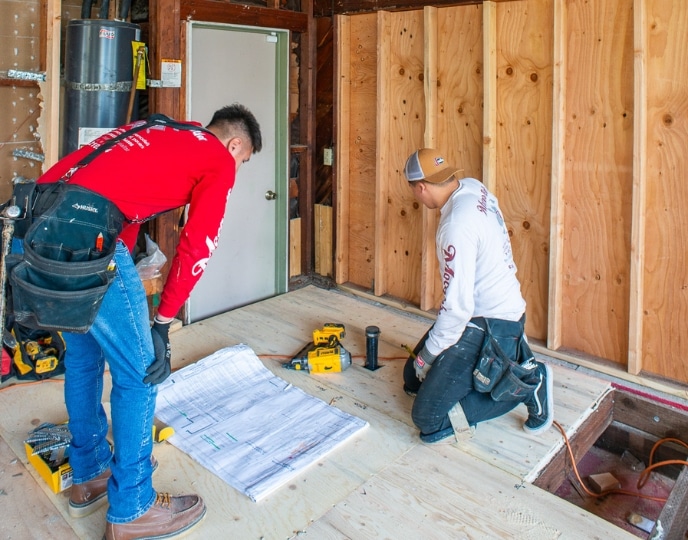
Pool houses can be designed efficiently within 100-1,000 square feet, adhering to zoning and setback laws to optimize backyard functionality.
Can You Build an ADU Near a Pool?
Building an ADU near a pool is possible, and it’s an attractive option for many homeowners. While municipalities generally allow ADUs near pools, they often also impose strict setback requirements to ensure safety and proper space utilization, mandating a minimum distance between the ADU and pool area. Safety is paramount, and California’s pool safety laws must be followed, which may involve barriers like fences, self-latching gates, or pool covers that should not be compromised by the placement of the ADU.
In San Diego, where outdoor living is highly valued, combining ADUs and pool areas is popular. Key considerations include setbacks, safety measures, proper access to both the ADU and the pool, managing drainage, and possibly modifying existing landscaping. Given the complexities, consulting with local building authorities and experienced professionals is crucial to design a project that maximizes the property’s potential while fully complying with local codes.
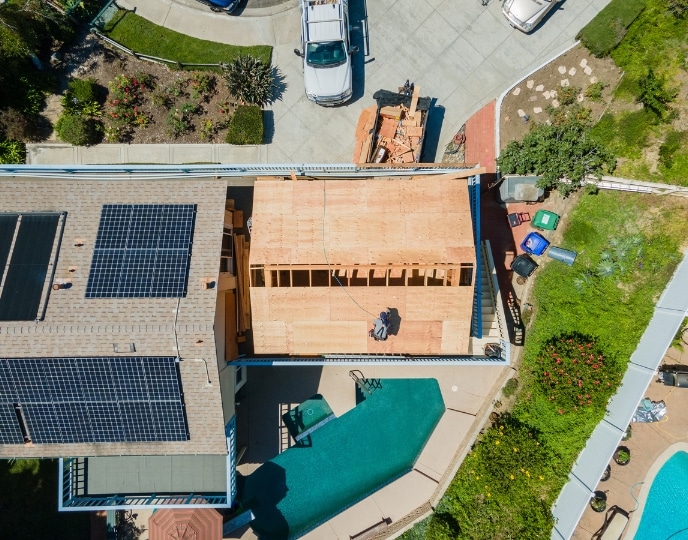
Building an ADU near a pool requires meeting specific setbacks and safety codes, like fencing and drainage management, to comply with regulations.
Can a Pool House or ADU Have a Kitchen or Bathroom?
While bathrooms are usually allowed in pool houses, adding a full kitchen may reclassify them as ADUs. ADUs typically require both amenities but must comply with local building codes and may face occupancy restrictions.
In the San Diego area, Better Place offers options with full amenities. If a pool house is what you’re looking for, designing a kitchenette rather than a full kitchen could be a way to meet local regulations. The additions of these structures can increase property value and usability but could also affect property taxes. Homeowners should consult local authorities and experienced contractors to navigate the specific requirements for their property.
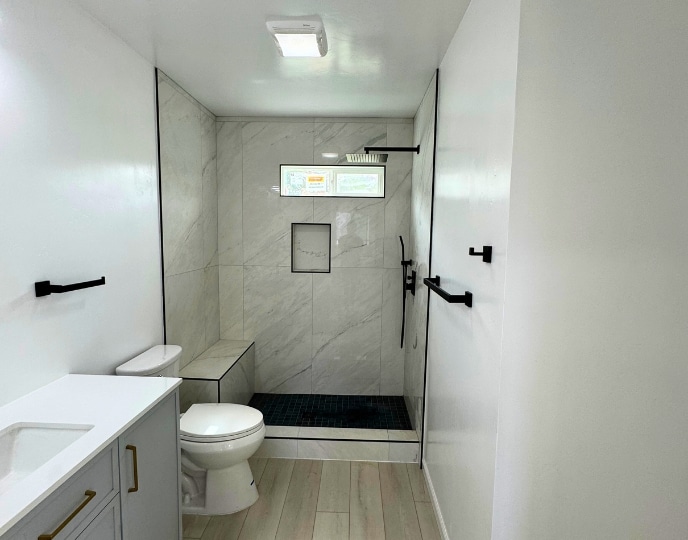
Adding a kitchen and bathroom to an ADU increases functionality and value but may require reclassification and additional permitting.
Can a Pool House Be Converted Into an ADU?
Converting a pool house into an ADU is definitely possible (and practical) but it requires careful planning and investment. The cost associated varies depending on existing structures and the necessary modifications.
Key changes include upgrading plumbing and electrical systems, improving insulation, installing a kitchen and bathroom (if the pool house doesn’t already have one), and ensuring the space meets local building codes. While potentially complex, this transformation can be a cost-effective way to add valuable living space or create a rental unit on your property. Success depends on the pool house’s current condition, proximity to utilities, and local regulations governing ADUs.
Choosing Between a Pool House and ADU for Your Property
If you’re still not sure whether to build a pool house or ADU, we can help! As an expert and local design and build company, we’re familiar with the regulations in San Diego and surrounding areas. This familiarity allows us to scope your project in a fast and fully informed manner, saving you the headache of researching regulations yourself. Each city and municipality will have their own regulations and definitions of pool houses and ADUs, which will ultimately determine what, where, and how you can build.
As you contemplate the choice between a pool house and ADU, you may think of some additional questions. If this list doesn’t answer them all, you can always schedule a free consultation with our team.
Frequently Asked Questions About Pool Houses and ADUs
Yes! The conversion may require special permits based on your local jurisdiction.
Depending on the locality and the extent of work needed, permit timelines can vary. San Diego can issue ADU permits in as little as 30 days. Since a pool house has fewer amenities than an ADU, it would most likely have a shorter permit process—but it may also require additional special inspections due to the proximity to the pool. Other factors that impede a quick permitting timeline include local jurisdiction and the number of permits they are processing, the completeness of the application, and the complexity of the project.
To expedite the process, you should research local requirements thoroughly (prior to applying), hire a company familiar with local codes, and make sure to submit a complete, well-organized set of drawings.

